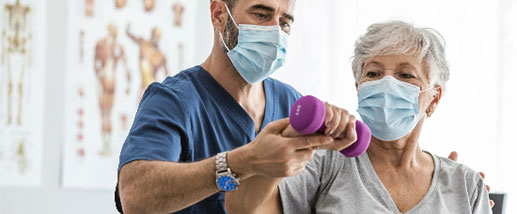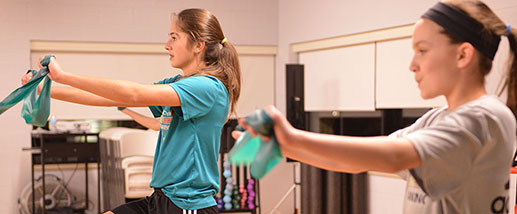Incontinence
Overactive Bladder
Our first line of treatment for overactive bladder (OAB) is kegel exercises and pelvic floor therapy in combination with dietary management. Depending on results, your provider may suggest medication or a third line treatment.
- Percutaneous Tibial Nerve Stimulation (PTNS) – PTNS is the least invasive form of neuromodulation used to treat overactive bladder and the associated symptoms of urinary urgency, frequency and urge incontinence.
- Botox – For symptoms such as a strong need to urinate with leakage or wetting accidents, urgency and frequency in adults when another type of medication does not work well enough or cannot be taken.
- InterStim – An implantable device used to treat overactive bladder symptoms such as a strong need to urinate with leakage or wetting accidents, urgency and frequency by regulating the signals from the nerves to the bladder.

Ready for relief?
Learn more about when to seek care, available treatments and finding relief or schedule an appointment with a specialist.
Connect with CareStress Urinary Incontinence
Stress incontinence happens when physical movement or activity — such as coughing, sneezing, running or heavy lifting — puts pressure (stress) on your bladder. We offer a variety of ways to treat urinary incontinence:
Pelvic Floor Therapy with Biofeedback
- Kegels and Biofeedback – This aims to help women identify and selectively contract and relax the pelvic floor muscles using signals from their own bodies.
- Electrical Stimulation Therapy – Electrical stimulation will provide an artificial contraction of the pelvic floor muscles, helping to strengthen and relax them.
Total Control Program
A fitness and educational pelvic health program designed to help women of all ages build a stronger pelvic floor and improve bladder control. These classes work with participants, integrating workouts, and educational discussions on nutritional, behavioral, and lifestyle information to help improve pelvic health and wellness.
The purpose is to improve core strength and posture by focusing on the muscles of the pelvic pyramid so that the body is in proper alignment. Pelvic Pyramid exercises can improve and may alleviate bladder control problems or issues during laughing, coughing, and sneezing. It helps patients maintain control while being active.
Sling
Vaginal sling procedures are types of procedures that help control stress urinary incontinence by supporting the urethra and bladder neck.
Periurethral Injections
- Collagen periurethral injection - collagen is injected around the urethra and bladder neck as a treatment for stress incontinence in women.
- Macroplastique - a silicon base suspended in a viscous gel injected around the urethra and bladder neck as a treatment for stress incontinence.
Fecal Incontinence
Fecal incontinence is not being able to control bowel movements. We offer a variety of ways to treat and evaluate fecal incontinence, constipation, and diarrhea:
Diet Modification
What you eat and drink affects the consistency of your stools. If constipation is causing fecal incontinence, your provider may recommend drinking plenty of fluids and eating fiber-rich foods. If diarrhea is contributing to the problem, high-fiber foods can also add bulk to your stools and make them less watery.
Physical Therapy
Physical therapy can improve anal sphincter control and the awareness of the urge to defecate.
Medications
Both over-the-counter and prescription medications are options for fecal incontinence treatment.
Vaginal Balloon (Eclipse System)
This is a pump-type device inserted in the vagina. The inflated balloon results in pressure on the rectal area, leading to a decrease in the number of episodes of fecal incontinence.
Posterior Tibial Nerves Stimulation (PTNS/TENS)
This minimally invasive treatment may be helpful for some people with fecal incontinence.
InterStim
Used to treat fecal incontinence, frequency and incomplete bowel emptying. An implantable device is used and sends mild electrical pulses to control muscles related to bowel movement.
Surgery
Treating fecal incontinence may require surgery to correct an underlying problem, such as rectal prolapse or sphincter damage caused by childbirth.




